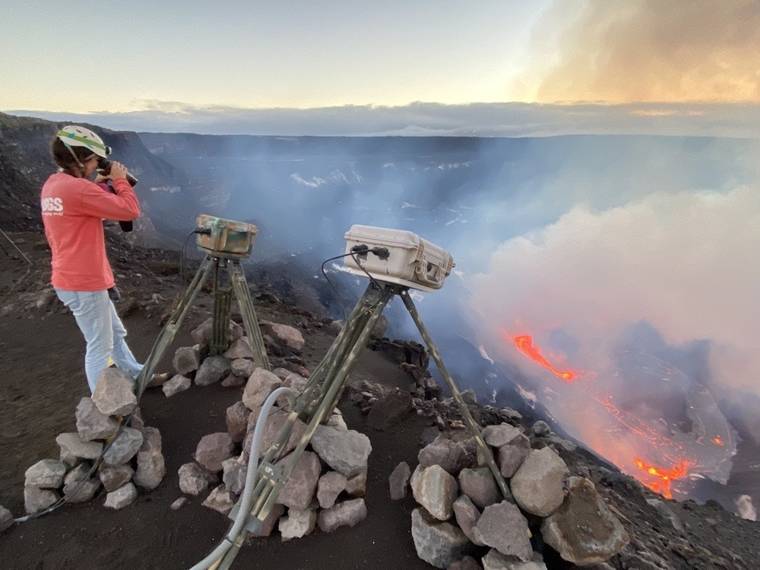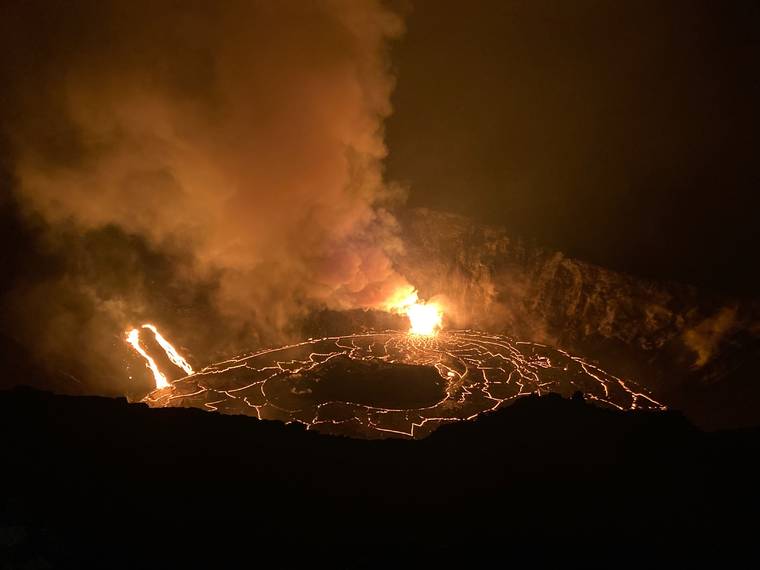Areas around the summit of Kilauea on Wednesday were blanketed in high levels of sulfur dioxide and particulates that reached levels established by the Environmental Protection Agency as hazardous, according to a statement from Hawaii Volcanoes National Park.
Park staff put up signs Wednesday warning visitors about the deteriorating conditions and issued alerts on its social media sites.
Visitors were urged to plan their visits and check the air quality website, www.HawaiiSO2Network.com, before coming to the park. Even low levels of volcanic gas are a threat to those with heart or respiratory issues, infants, young children and pregnant women, HVNP said.
“This current eruption is more challenging than eruptions in the past because we have the added threat of COVID-19,” said HVNP Superintendent Rhonda Loh. “When air quality is poor, visitors should get in their vehicles, turn on the air conditioner, and go to another area not impacted by volcanic gas. There are no safe options for visitors to seek shelter indoors in the park due to the pandemic.”
Typically, the prevailing trade winds from the northeast carry the plume of volcanic gas, water vapor and particulates being released by the eruption to the southwest and away from the summit.
Earlier Wednesday, the lava lake inside Halema‘uma‘u crater was at least 521 feet deep and was still being fed by two fissures, according to the Hawaiian Volcano Observatory.
The surface of the lake was 1,522 feet below the crater rim observation site.
Observations made Wednesday morning indicated the lake rose 75 feet in just over 24 hours, HVO said.
The current depth is more than triple the depth of the water lake that was in the crater until the evening of Dec. 20, when it was vaporized.
The east-west length of the lake was estimated to be 750 yards, or the equivalent of about 7.5 football fields.









